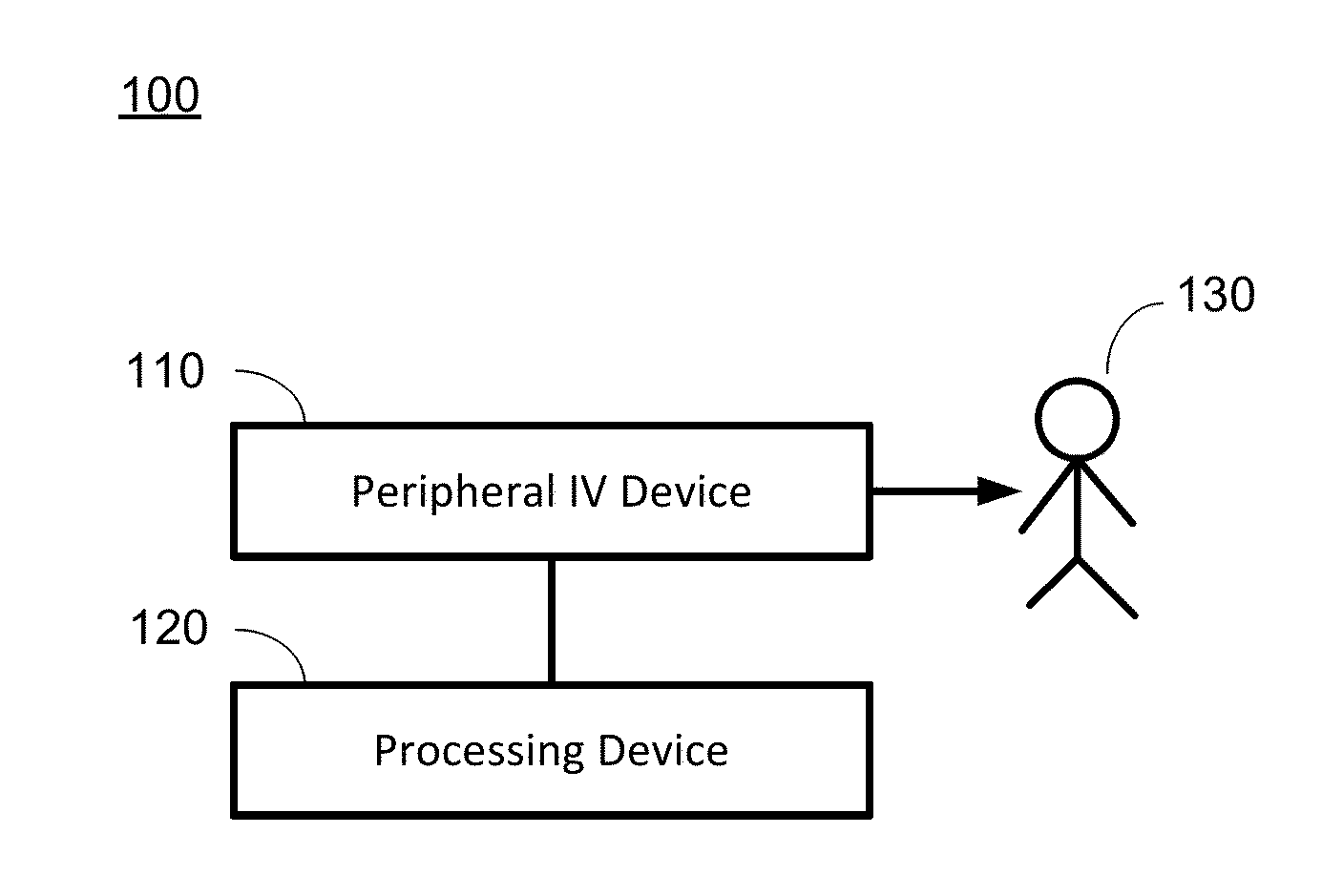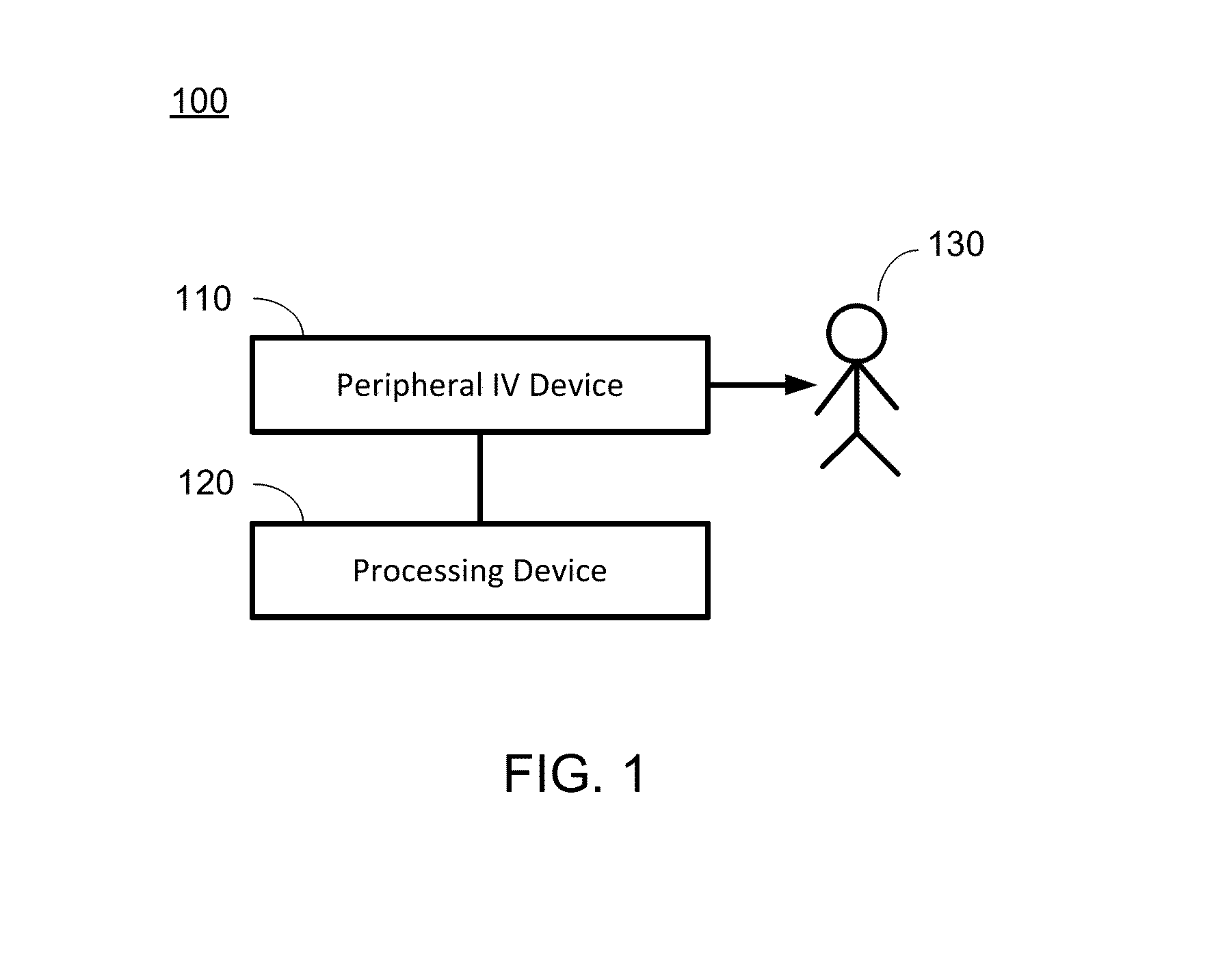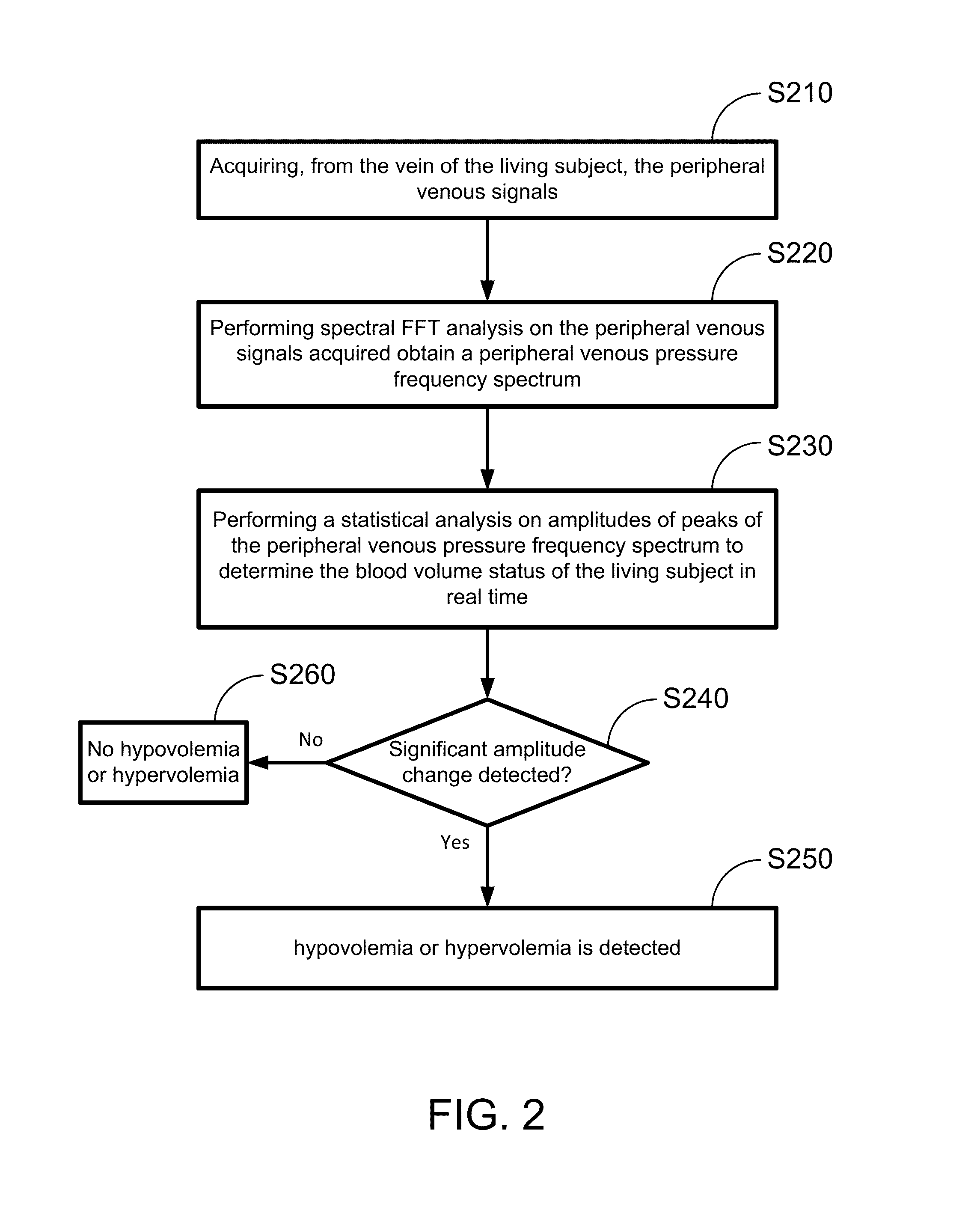Hypovolemia/hypervolemia detection using peripheral intravenous waveform analysis (PIVA) and applications of same
- Summary
- Abstract
- Description
- Claims
- Application Information
AI Technical Summary
Benefits of technology
Problems solved by technology
Method used
Image
Examples
example 1
Test in Porcine Hemorrhage-Resuscitation Model
[0104]In this example, a test has been performed using PIVA in a porcine hemorrhage-resuscitation model to study dynamic volume shifts in a standardized setting. Under an approved Institutional Animal Care and Use Committee protocol, 8 adult Yorkshire pigs, each weighing 45+ / −0.8 kg, were monitored non-invasively with a noninvasive blood pressure cuff, 5-lead electrocardiogram, and pulse oximeter (SurgiVet, Norwell, Boston, Mass.). Each animal was induced with general anesthesia Telazol 2 mg, Ketamine 50 mg, and Xylazine 2 mg given via an ear vein. After intubation with a cuffed 5.0 ID endotracheal tube the pigs were ventilated with a volume controlled ventilator (Hallowell EMC, MA, USA) with a volume-controlled mode of 8 mL / kg tidal volume with a positive end-expiratory pressure of 5 cm H2O, I:E ratio 1:2, and a FiO21.0. Respiratory rate (16-22 breaths / minute) was titrated to maintain an end-tidal CO2 of 35-40 mmHg.
[0105]Anesthesia was ...
example 2
Test in Controlled Human Hemorrhagic Model
[0123]In this example, a test has been performed using PIVA in a controlled human hemorrhagic model to analyze dynamic changes in the peripheral venous waveforms to assess volume status. The test was approved by the Vanderbilt University Institutional Review Board (IRB), and informed written consent was obtained preoperatively in select patients scheduled for elective cardiac surgery. Any patient undergoing elective cardiac surgery met the inclusion criteria. Patients with a history of moderate or severe right ventricular dysfunction, severe anemia (hemoglobin <8 g / dl) or patients who presented with arrhythmias or hemodynamic instability were excluded. A total of 12 patients were studied.
Anesthesia and Mechanical Ventilation
[0124]All patients were induced with an opiate and propofol and received non-depolarizing neuromuscular blockade so that there was no evidence of spontaneous respirations. All patients were intubated with an endotracheal ...
example 3
Additional Tests
[0136]As shown in the previous examples, the inventors have found that venous waveform analysis overcomes many critical barriers associated with arterial-based monitoring. The inventors discovered and confirmed with tests that peripheral intravenous waveform analysis (PIVA) obtained via a pressure transducer in a standard intravenous catheter detects hemorrhage in humans and porcine models.
[0137]The inventors have conducted additional tests on PIVA detections of blood loss in pigs: In the test, the PIVA device is applied to intubated and sedated pigs (n=4). All pigs were monitored in real time with intra-arterial blood pressure, heart rate, pulse oximeter, and a 5-lead electrocardiogram. The PIVA device was interfaced with LabChart (ADlnstruments, Colorado Springs, Colo., USA) software for continuous, real-time data collection. Up to 15% of blood volume was incrementally removed during a 20-minute period.
[0138]FIG. 12 shows (A) PIVA signal and (B) shock index for det...
PUM
 Login to View More
Login to View More Abstract
Description
Claims
Application Information
 Login to View More
Login to View More - R&D
- Intellectual Property
- Life Sciences
- Materials
- Tech Scout
- Unparalleled Data Quality
- Higher Quality Content
- 60% Fewer Hallucinations
Browse by: Latest US Patents, China's latest patents, Technical Efficacy Thesaurus, Application Domain, Technology Topic, Popular Technical Reports.
© 2025 PatSnap. All rights reserved.Legal|Privacy policy|Modern Slavery Act Transparency Statement|Sitemap|About US| Contact US: help@patsnap.com



